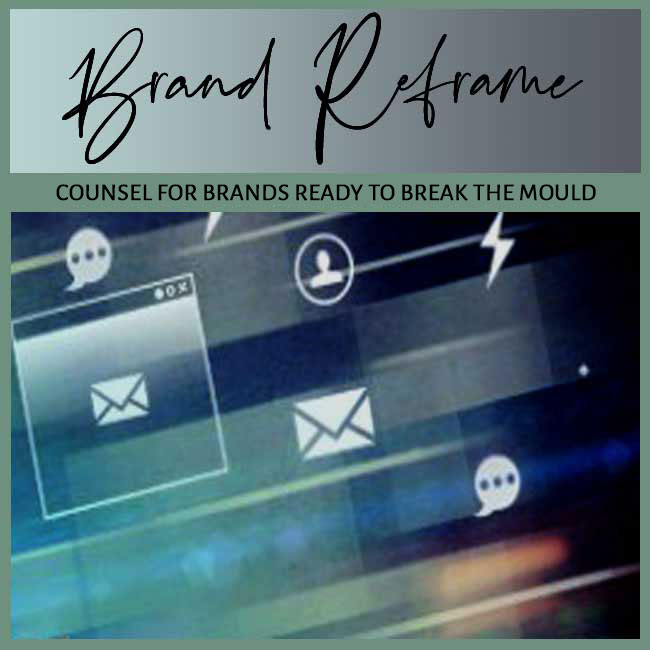
FOCUS: BRAND LAUNCH FAILURE | AUDIENCE: INVESTORS IN SLUGGISH BRANDS
BY: SHOBHA PONNAPPA | BRAND BREAKTHROUGH STRATEGIST | 45 YEARS | 125+ CLIENTS
I answer 6 tough questions about why a brand’s pitch deck tone rarely matches its live website … and what that disconnect reveals.
Many investor-backed startups come to me after launch with a common concern: “Our pitch got great attention, but the brand online feels diluted.” That’s not just a writing issue … it’s a strategic disconnect between positioning and execution. In this post, I unpack the most revealing questions I’m asked when a brand’s tone shifts sharply from deck to digital.
Because pitch decks are written with clarity of audience and purpose. They’re designed to persuade, often by one person, with investor attention in mind. Websites, however, tend to be built by committee … often rushed, fragmented, or delegated to third parties with no feel for the founder’s conviction.
The result is a watered-down voice. The boldness of the deck becomes the beige of the homepage. This isn’t a content gap … it’s a strategy gap, and it shows up clearly in tone. This leaves early visitors wondering whether the brand they were introduced to still exists in full force.
It signals uncertainty. If the tone that got the funding doesn’t show up in the product narrative, people wonder what changed. The energy dips. The message loses edge. And partners may question whether the leadership still believes in the original vision.
First impressions matter. Inconsistent tone breaks trust before product experience even begins. You want the same firepower across all touchpoints, not just in investor rooms. The longer that disconnect remains visible, the more it erodes confidence at every touchpoint.
Because it usually is. Founders write their decks. Agencies or freelancers write their sites. And unless tightly guided, those writers default to safe industry templates. They prioritise clarity over conviction … structure over soul.
The real loss here is not just voice … it’s vision translated into blandness. Brands can’t afford for their origin story to get lost in transmission. When storytelling gets outsourced without stewardship, coherence becomes the first casualty.
The root issue is fragmented briefing. The deck is a story told with intent. The website often begins as a checklist of pages … About, Product, Pricing … without the original narrative scaffold. Different people own different pieces, with no shared tone map.
That’s how alignment breaks. A story needs one narrator, not ten editors. Without a core voice guide, drift is inevitable. Without one strong narrative owner, each asset becomes an isolated island instead of part of a shared journey.
Compare the pitch language with the brand’s homepage. Do they sound like the same brand? Look at verbs, tone, and confidence. If the deck says “revolutionising” but the site says “serving,” you have a dilution. If one feels alive and the other flat, there’s your red flag.
Tone isn’t just aesthetics … it’s strategic signal. When it’s off, chances are other things are too: product clarity, user targeting, even culture. This kind of tonal whiplash can hint at a larger lack of narrative governance. When it’s off, chances are other things are too: product clarity, user targeting, even culture.
Start with a tone alignment audit. Bring the original pitch into the room and measure your site’s language against it. Is the purpose intact? Is the ambition showing? Reconnect with the founder voice, and rebuild messaging from the ground up if needed.
Fixing tone means fixing focus. When the narrative is clear, the tone naturally follows. Brands that do this early recover faster and grow stronger. Brands that bring tone, message, and story back to the same page don’t just sound better … they convert better too.
If these questions reflect what you’re seeing, it’s time to stop treating copy as cosmetic. Tone reveals conviction. When it shifts without reason, trust erodes. Bring your brand voice back in line with your brand vision … and momentum follows. That consistency can become the very proof point of your clarity, confidence, and direction.
If you’re brand owner or manager seeking stronger brand performance, this FAQ Insight Post I wrote could interest you: “FAQs: How Too Many Products Can Blur a Brand’s Core Appeal.“
And if you’re a solo expert looking to sharpen traction, this FAQ Insight Post I worked on may resonate: “FAQs: Why Niche Offers Can Often Confuse Broader Markets.“

"One BIG IDEA can turn brand stagnation into unstoppable movement. Spots are limited each week ... book your breakthrough session now."
Shobha Ponnappa
More Breakthrough Ideas – Case Studies & FAQs – from the Brand Launch Failure Category
Case Studies
FAQ Insights
Smart insights, real-world frameworks, and idea-driven clarity – designed to help brands move.
Get my fortnightly Brand Reframe newsletter. Smart insights, distilled thinking, and focused momentum to help your brand lead.

Get my free AI strategy guide. Smart prompts, sharper briefs, and practical ways to make AI support your brand momentum.

Just fill in the form to join. Get my newsletter and the guide shown alongside, all with several game-changing tips.